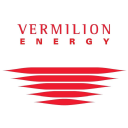/ factorpad.com / stocks / f42wzm.html
An ad-free and cookie-free website.
Our quantitative data points are meant to provide a high-level understanding of factors in equity risk models for Vermilion Energy Inc. Portfolio managers use these models to forecast risk, optimize portfolios and review performance.
We show how VET stock compares to 2,000+ US-based stocks, and to peers in the Mining, Quarrying, and Oil and Gas Extraction sector and Crude Petroleum and Natural Gas Extraction industry.
Please do not consider this data as investment advice. Data is downloaded from sources we deem reliable, but errors may occur.
 Vermilion is an international energy producer that seeks to create value through the acquisition, exploration, development and optimization of producing properties in North America, Europe and Australia. Its business model emphasizes organic production growth augmented with value-adding acquisitions, along with returning capital to investors when economically warranted. Vermilion is targeting growth in production primarily through the exploitation of light oil and liquids-rich natural gas conventional resource plays in Canada and the United States, the exploration and development of high impact natural gas opportunities in the Netherlands and Germany, and through oil drilling and workover programs in France and Australia. Vermilion holds a 20% working interest in the Corrib gas field in Ireland.
Vermilion is an international energy producer that seeks to create value through the acquisition, exploration, development and optimization of producing properties in North America, Europe and Australia. Its business model emphasizes organic production growth augmented with value-adding acquisitions, along with returning capital to investors when economically warranted. Vermilion is targeting growth in production primarily through the exploitation of light oil and liquids-rich natural gas conventional resource plays in Canada and the United States, the exploration and development of high impact natural gas opportunities in the Netherlands and Germany, and through oil drilling and workover programs in France and Australia. Vermilion holds a 20% working interest in the Corrib gas field in Ireland.
Many of the following risk metrics are standardized and transformed into quantitative factors in institutional-level risk models.
Rankings below represent percentiles from 1 to 100, with 1 being the lowest rating of risk.
Stocks with higher beta exhibit higher sensitivity to the ups and downs in the market. (↑↑)
Stocks with higher market capitalization often have lower risk. (↑↓)
Higher average daily dollar volume over the past 30 days implies lower liquidity risk. (↑↓)
Higher price momentum stocks, aka recent winners, equate to lower risk for many investors. (↑↓)
Style risk factors often include measures of profitability and payout levels.
Companies with higher earnings generally provide lower risk. (↑↓)
Companies with higher dividend yields, if sustaintable, are perceived to have lower risk. (↑↓)
/ factorpad.com / stocks / f42wzm.html
A newly-updated free resource. Connect and refer a friend today.